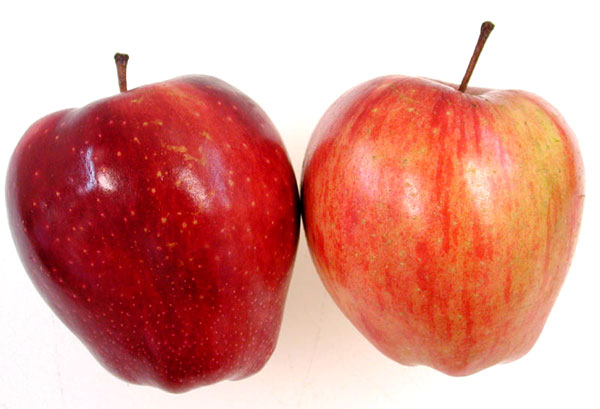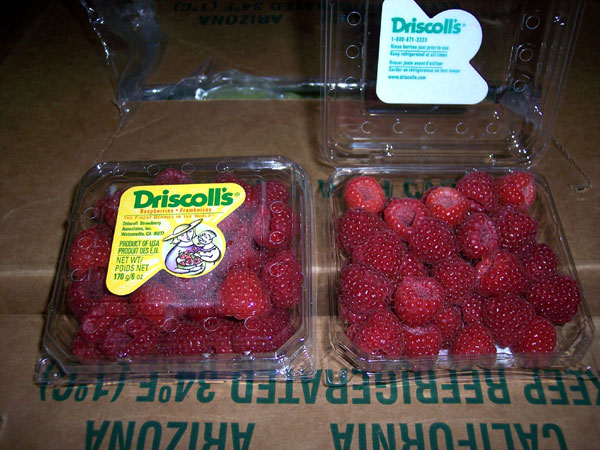One of the easiest ways to document and explain a problem you are finding, is to take a digital picture of the defect and e-mail the image(s) to the shipper. Sounds easy enough, right? There are few procedures to follow when taking digital pictures, but you first have to decide when a picture is worth the time.
If you encounter an unusual defect, something you are unaccustomed to seeing, is a good time for a picture. You may find scars on citrus, misshapen tomatoes, discoloration on honeydews, or poorly colored apples. Situations such as these are a great time to pull out the digital camera and take a few pictures of the problem you are finding. It may be difficult to describe the scars (how many scars, how dark, how large, how rough), or the discoloration (brown or black, location on the melon, or if the discoloration is sunken.) When reporting the apples being poorly colored, or light in color, a picture saves time and frustration of trying to describe the light color as pink, or light red, or reddish pink, or on 33% or 40% or on 50% of the apple’s surface.

As you can see from setting two apples up, side by side, the poorly colored apple is easily identified.
When taking your pictures you do want the image to be representative of what you are finding. Try to find a neutral background, one that will allow the product to stand out. It is a good idea to take one or two pictures of the product still in the container. This clears up any doubt to the interested parties of the identity of the product.

As you can see from the above image, the brand is easily identifiable, and I took an image of the product in an open container. No rearranging of the product to misrepresent the problems found. This will show the shipper exactly how the product looks .
You will then want to place some of the defective specimens on a plain background. Try to have the background color contrast with the products color. Lay out a few of the defects, showing good examples of what you are finding.

To produce a clear, close-up of the defect you may have to experiment with a few of the camera settings. First and foremost, placing the camera on a steady object will be a huge benefit. If you can set the shutter to a timer release, click on the shutter and then remove your hands from the camera, this will produce much clearer images. Take a few images with the flash setting on and take a few with the flash setting off. Choose the best images and e-mail your images to the shipper with a short message describing how many (percentages) of the defect you are finding.
If you feel uneasy around a camera, the USDA offers to take the digital images for you. They will follow the same procedures as outlined above, and there will be a fee for their service. They will charge $74 per hour, which includes the time spent setting up the shots, finding some samples, taking the pictures, downloading and e-mailing, as well as administrative time spent on the billing and recording. It is safe to say the fee will about $74 to $148, plus any mileage expenses involved, at $1.32 per mile, round-trip.
I would suggest taking the pictures yourself and sending them to the shipper. Upon seeing the problem, the shipper may work out a price adjustment or a solution and save everyone the time and money of following up with a USDA inspection. If your come across some strange defects, send me some of your pictures and I will share them on the web site. Send your images to: tyawman@ipt.us.com

One Comment on “Digital Images”
Using Digital images to settle high dollar produce
disputes is like giving the North Koreans blueprints
to our nuclear technology. If Mr/Ms Produce Receiver
has their job on the line what’s going to prevent
them from selecting 12 bruised apples from a full
shipment, then snaping a few pictures of them and
calling the shipper saying those apples represent what
they saw in one sample? The shipper will never really
know, will they? As for it being used for identification
purposes only, why? Most defects should be understood
simply by stating such. This is just another prime
example of the cost of something not needed being
passed from one to another with the consumer ultimately
paying the price for it in the end.